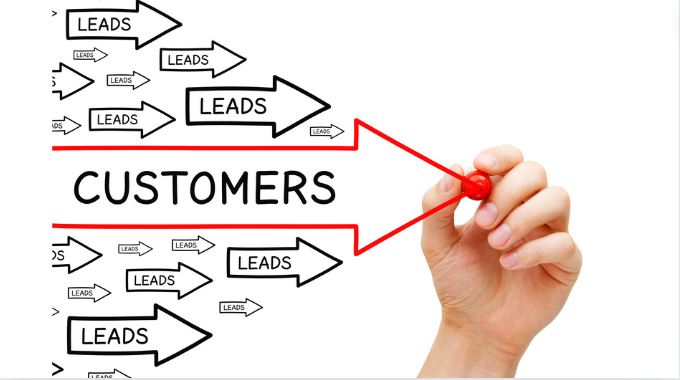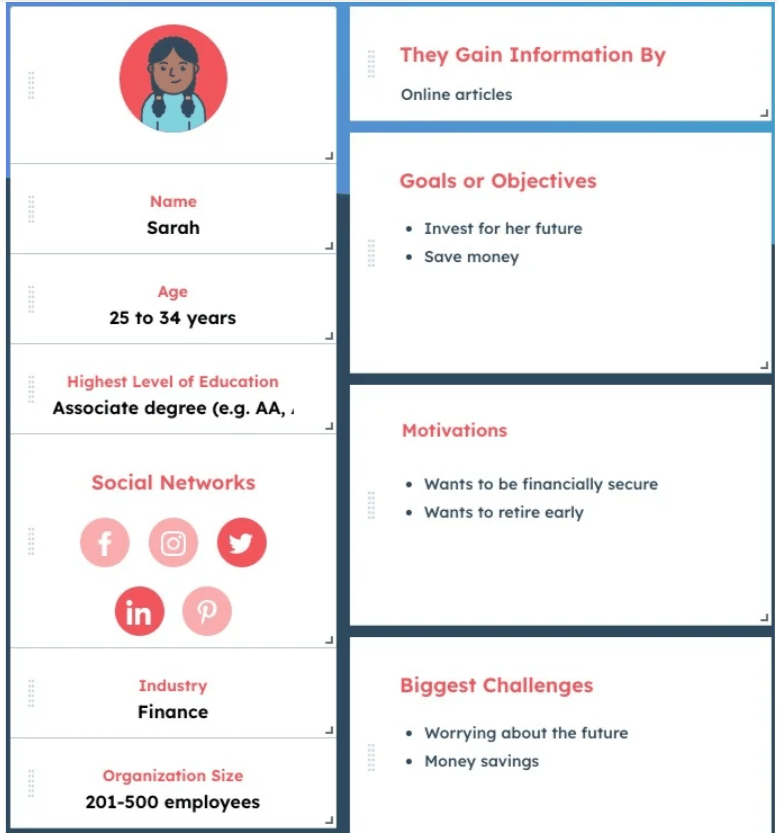How to Nurture Leads: Tactics and Experts Tips for 2025

I hope you enjoy this blog post. If you want Hello Bar to grow your leads, click here.
Author:
Ryan Bettencourt
Published
July 30, 2024

You ran an email lead generation campaign and managed to get some quality leads – mission accomplished! Before you pat yourself on the back and consider the job done, you must know that there is a lot more work to do.
Before patting yourself on the back and considering the job done, you must know that there is much more work to do. Yes, now starts the herculean task of getting your leads to proceed to the next stage of the buyer’s journey and convert them.
You would be surprised to know that about 80% of leads never convert. Additionally, 50% of your leads may not be sales-ready.
Don’t be discouraged by these numbers. With effective lead nurturing, you can turn these leads into customers.
In this post, we’ll explore how to nurture leads and the most effective lead nurturing strategy to boost your revenue sustainably.
Let’s get started.
What is Lead Nurturing?
The process of turning a lead into a customer is referred to as lead nurturing. It is a planned process to build awareness and educate the leads about your brand. Lead nurturing helps businesses improve their conversion rate and revenue generation.
Lead nurturing is all about building a solid relationship with your leads, addressing their questions, winning their trust, and finally, making them ready to buy your product or service.
What are the Stages of a Lead Nurturing

Converting website visitors into customers is an art. While a majority of leads who enter your sales funnel do not intend to buy from you instantly, they are always open to knowing your brand better. That’s where lead nurturing weaves its magic.
Understanding that your prospects need to move through different stages of the sales funnel before becoming customers is an effective lead nurturing strategy.
Let’s explore the different lead nurturing stages.
Stage 1: Awareness
Interacting with your marketing efforts introduces people to your brand. Clicking on your ad, social media post, or a search result to explore your website makes them aware of your brand. Your sales and marketing strategies boost brand awareness and encourage them to share their email to subscribe to your newsletter or access the lead magnet of their interest.
At the awareness stage, your leads do not know much about your product, nor do you have many details about them. The subscribers at this stage are called marketing qualified leads (MQL). You can adopt a multi-channel marketing approach to introducing your brand and nurturing leads in the initial stage.
Automated email campaigns and retargeting on social media are the best tactics for sharing useful content to educate the leads. Effective lead nurturing tactics involve putting in enough effort to get to know them better before moving them to the next stage.
Stage 2: Interest
The second stage of lead nurturing is often more important as this is where you differentiate yourself from your competitors. This lead nurturing strategy requires you to put your best foot forward while highlighting your USP. Here, you need to state what makes you stand out from other brands in the industry.
Understanding your leads enables you to create personas and personalized communication to best engage them. You can ignite genuine interest in your brand by addressing their pain points and presenting your product as a suitable solution.
Stage 3: Consideration
When the prospects enter this stage, they turn from marketing leads into sales-qualified leads (SQL). In other words, these are leads interested in your products and are considering purchasing.
How do you nurture leads at this stage? You share highly targeted content about the specific product or services that precisely meet their needs. You can offer a trial or free demo to further convince them.
Ecommerce businesses can offer an exclusive discount or free shipping. To speed up the process, you can make a time-bound offer, which would persuade the leads to go ahead and make a decision.
Stage 4: Decision Making
Now your leads are ready to make their first purchase. If you are a SaaS company, this is where you’ll do the final negotiations to offer the best deal to your clients.
Ecommerce brands can invite the leads to specific categories on the website or even directly to the product page for a seamless buying process. By delivering high-quality customer experience and assistance, you can successfully convert leads into customers.
You May Also Like:
- 12 Lead Generation Strategies That Will Greatly Increase Conversions
- How to Generate Leads from Email Marketing: 11 Ways
Benefits of Lead Nurturing

Lead nurturing is a powerful strategy to enhance the effect of your marketing and sales strategies. A well-thought-out lead nurturing strategy can provide immediate benefits and help you establish sustainable growth.
Let’s look at some of the benefits of lead nurturing:
- Qualify Leads Faster: Lead nurturing is all about keeping your brand on top of your prospect’s mind. When your prospects are fully aware and convinced about your offering, qualifying them for the next stage is easier. Strategic nurturing at every stage helps move leads faster through the sales cycle and turn them into customers.
- Build Stronger Relationships: While your end goal is to sell more, lead nurturing helps you to build a stronger relationship with your prospects. As you consistently provide relevant content, address their pain points, and move them to a decision-making position, they begin to trust your brand. This is one of the effective lead nurturing strategies that establishes long-term loyalty.
- Reduce Overall Marketing Cost: It’s no secret that acquiring new customers is expensive. Lead nurturing helps justify this cost by shortening the conversion process and qualifying the leads better to enhance ROI. Well-nurtured customers are more likely to have a better lifetime value and thus reduce the overall marketing cost.
- Increase Conversion Rate: While lead generation is vital, it does not ensure conversion. A strong nurturing strategy increases the likelihood of these leads becoming revenue-generating customers. The more convinced your prospects are about your brand, the better their chances of buying your products.
- Reactivate Dormant Leads: Leads who were initially interested in your product or services could have gone cold. Lead nurturing tactics can effectively re-engage such dormant leads and reignite their desire for your brand. While it’s an inexpensive move, you are more likely to generate revenue as these customers are already aware of your offerings.
- Scale Up Customer Support: Lead nurturing widens your understanding of the challenges and desires of your target audience. Such invaluable insight can help you better serve our existing customers. Lead nurturing strategies also help you offer more customized recommendations and deals.
You May Also Like:
- Email Drip Campaigns: 10 Tips To Greatly Increase Sales Using Emails
- Customer Journey Maps – A Complete Guide to Help You Create Yours
7 Steps of How to Nurture Leads Successfully
Nurturing leads is not as simple as bombarding potential customers with emails and newsletters. The last thing you want is to annoy your leads and have them lose interest by mindlessly spamming them with an overload of information.
Lead nurturing campaigns need to be well-planned. You need to engage with your leads and present them with the right information to help them make a buying decision in your favor. Let’s discuss how you can drive effective lead nurturing campaigns and increase conversions.
1. Create Buyer Personas
How will you ‘nurture’ your leads if you don’t know who your ideal customer is? This is why creating buyer personas is of the utmost importance.
At a time when personalized and timely content is vital, the only way to engage with leads is to deliver relevant content that meets every individual’s needs.
To do that, you need to perform qualitative and quantitative research. These lead nurturing tactics require gathering information and creating a profile of your ideal customer.
Qualitative research includes surveying current, past, and potential customers and lost leads. Ask questions to determine their needs, buying behavior, motivations, existing pain points, and priorities.
Top lead generation tools like Hubspot, OptinMonster, and so on can help create buyer personas automatically based on the information your leads share. Here is an example of an informative buyer persona.

It is also important to identify people you don’t wish to target (also called negative buyer persona). Identifying the pool of people you want to avoid enhances your content creation and targeting efforts.
Once you have the data from quantitative and qualitative research, creating buyer persona templates to streamline your research and strategy is a good idea.
2. Segment your Audiences
It is essential to acknowledge that all your leads are not the same, which means you cannot adopt a ‘one size fits all’ approach if you want to make your efforts count.
Audience segmentation lets you target the right person at the right time with the right content. It involves dividing your audience based on their characteristics and behaviors so that each segment has a unique need.
Here are some ways to segment your audience:
- Demographics – age, gender, marital status, occupation, income
- Geographic – location
- Website behavior
- Interests
- Lead source
- Communication preferences
While one part of segmentation depends on your audience’s characteristics, you can also categorize them based on their buyer’s journey stages.
Doing this crucial exercise lets you deliver valuable, relevant content to your leads instead of putting out generic messaging, thereby increasing the chances of conversions.
You May Also Like:
- 35 Lead Magnet Ideas and Examples to Convert Visitors Into Leads
- 3 Secrets for Converting Marketing Leads into Sales Leads
3. Send Targeted Content to Segmented Audiences
Sending targeted content is an effective lead nurturing strategy. So, now that you have segmented your audience, the next lead nurturing tactics is creating content for every segment and stage in the buyer’s journey.
For instance, send a lead in the ‘consideration’ stage content to give them more information about your product/service. Highlight the benefits of your products and make comparisons to urge them to enter the ‘decision’ stage.
Here are the types of content suited for different stages of the buyer’s journey:
- Awareness (Top of the funnel) – blog posts, infographics, ebooks
- Consideration (Middle of the funnel) – webinars, whitepapers, blog posts
- Decision (Bottom of the funnel) – case studies, product demos, customer testimonials, trial offers
4. Educate Leads

An essential aspect of lead nurturing email campaigns is educating prospects about your product/service and building credibility to increase your chances of being considered.
Your content needs to provide value, address pain points, and offer solutions. The idea is to create awareness and generate interest in your leads.
Personalize your lead nurturing content by addressing leads by their names. Another strategy is accurate targeting, and including information about their interests, needs, or behavior.
These are the types of informative and educational content you can produce when nurturing leads:
- Blogs
- eBooks
- FAQs
- Emails
- Interactive content
- Webinars
- Whitepapers
- Live demos
- Videos
- Social media posts
- Infographics
- Case studies
- Social proof, and testimonials
Regardless of the content, you create, it needs to have a strong and visible call-to-action that gives a clear indication on what needs to be done.
5. Consider Multiple Channels
Today’s consumer is everywhere – from websites, social media, and emails to offline channels. Gone are the days when marketers could put all their eggs in one basket and focus on a single marketing channel, expecting it to generate results.
You need to implement multi-channel lead nurturing campaigns that consider buyer behavior across several channels and deliver targeted and personalized content, encouraging potential customers to act.
Multi-channel lead nurturing involves the following mediums:
- Email marketing
- Marketing automation
- Social media marketing
- Retargeting ads
- Dynamic website content
- Mobile marketing
While your brand needs to be visible everywhere, especially on social media channels, you cannot afford to spam people with duplicate content. Your lead nurturing campaign should always track responses and ensure the sales and marketing teams are aligned.
6. Run a Retargeting Campaign

A potential customer visits your website, fills a lead form, and signs up for your email list – now, what? Do you wait around for this lead to come back? No – you retarget this lead using AdWords or Facebook Ads.
Create remarketing ads to entice leads with a free product trial or demo, deliver additional value to influence their purchase decision, or even present them with customer testimonials to convince them that your product/service is worth it.
7. Track Response
You can produce a wide variety of content to nurture leads, but how do you know which one resonates with the audience and delivers results?
Here are 5 important metrics you should track to gauge the performance of your lead nurturing campaign:
- Click-through rate: This metric measures the percentage of users who clicked the links in a lead nurturing email. You should aim to maintain a CTR in the range of 2-5%.
- Conversion rate: This metric measures the percentage of users who clicked on a link and completed the desired action. Conversion rates should be between 1-3%.
- Time-to-customer conversion: The time required for a lead to become a customer. The ideal time-to-customer conversion rate should not be more than 18 days.
- Cost per customer: This metric measures the marketing cost required to acquire a new customer.
- Unsubscribe rate: This metric measures how long a business has managed to hold a customer’s interest. For successful lead nurturing, it is best to keep the unsubscribe rate below 1%.
You May Also Like:
- 7 Ecommerce Lead Generation Tactics for 2025
- How To Create And Maintain Brand Loyalty Like a Pro in 2025
Best Practices for Creating a Solid Lead Nurturing Strategy
Designing the best lead nurturing workflow takes effort and a lot of testing. We have handpicked a few best practices that yield the best results for us, and we highly recommend that you also adopt them to get positive results.
Let’s take a quick look at them.
- Score Your Leads: Perform lead scoring right at the first stage when leads enter your sales funnel. Score your leads based on their demographics, interests, budget, and other metrics so you can easily create segments.
Lead scoring and segmentation can help you to create more targeted lead nurturing efforts right from the beginning. Not only does it save time and money, but it can also prevent you from targeting negative leads.
- Invest in Customer Journey Mapping: You can create detailed customer journey maps based on how your leads convert. These will help you anticipate the time and steps your leads typically take to move through the sales funnel.
This is one of the lead nurturing strategies that gives you the advantage of predicting your prospects’ expectations and challenges in advance. Investing in customer journey mapping enables you to meet your lead at the right touchpoints, helping to increase conversions.
- Automate the Process: Lead nurturing is not a one-off effort, it’s a continuous process that can be simplified with automation. Automating your email campaigns can help you deliver the right content to specific segments of leads on autopilot. You can invest in a good email marketing platform to help you manage your lead nurturing campaign smoothly.
- Prioritize Customization: Once your leads show genuine interest in your offerings, it’s time to personalize your lead nurturing efforts. Understanding their preferences and challenges, share personalized recommendations, demos, trials, offers, and specific CTAs they can’t resist.
- Avoid Being Too Salesy: Being too pushy is one of the easiest ways to lose your leads. A successful lead nurturing campaign always strives to strike the right balance between promotion and nurturing.
If you try too hard to move your leads to make a purchase, they might avoid your emails, communication, or any other marketing effort from your brand. Even worse, over-promotional emails can hurt your prospects and cause them to permanently drop out of the sales pipeline.
- Continue Nurturing Post-Sales: If you thought your nurturing efforts should stop once your prospects make their first purchase, you are wrong. A lead nurturing campaign should continue engaging prospects to collect feedback, upsell, and maintain their interest in your brand.
Regularly updating leads about your products and sending periodical recommendations and offers will not only encourage them to return for more purchases but ultimately turn them into loyal customers. Nurtured leads can become loyal customers with excellent lifetime value.
You May Also Like:
- How to Generate Leads from Email Marketing: 11 Ways
- Ecommerce Email Marketing – 20 Tips to Increase Sales
FAQs
Q1. What are the stages of lead nurturing?
While different experts have their own opinions of the lead nurturing process, here are the 4 widely accepted stages:
- Awareness
- Interest
- Consideration
- Decision making (Purchase)
Q2. What channels can you use to nurture leads?
There is no limit to the channels you can use to boost your lead nurturing effort. It all depends on your goals and budget. Here are some of the core channels you should never ignore:
- Email marketing
- SMS marketing
- Social media marketing
- Blog posts and videos
- Interactive content
Q3. How do you nurture inactive leads?
One can adopt various techniques to re-engage and nurture inactive leads, including:
- Evaluate the reason for their disinterest
- Address their concerns
- Start a re-engagement email campaign
- Personalize your communication
- Grab attention with customized offers
Q4. How long should you nurture your leads?
There is no fixed time frame for nurturing a lead. It depends on various factors, such as the type of campaign you are running, lead generation cost, the value of the lead, and so on.
Before ceasing your lead nurturing efforts, evaluate the stage at which the lead is stuck in the sales funnel. If a discount or offer could push them to purchase, you should go for it.
Q5. What should you strictly avoid while nurturing leads?
Lead nurturing is a strategic process and should be executed effectively at every stage to get post leads. Here are a few things you should strictly avoid:
- Stop being too promotional
- Avoid sending generic and common messages
- Ignoring lead scoring and segmentation
- Not following up with the prospects
- Not gathering all the details
- Insufficient planning and not targeting the proper channels
Conclusion
Lead nurturing takes time but is worth it. By understanding your audience, using marketing automation tools, creating meaningful content, targeting the desired audience, and tracking progress, you can drive successful lead nurturing campaigns to boost conversions and sales.
So, don’t let your lead generation efforts go to waste – seal the deal and complete the circle!







